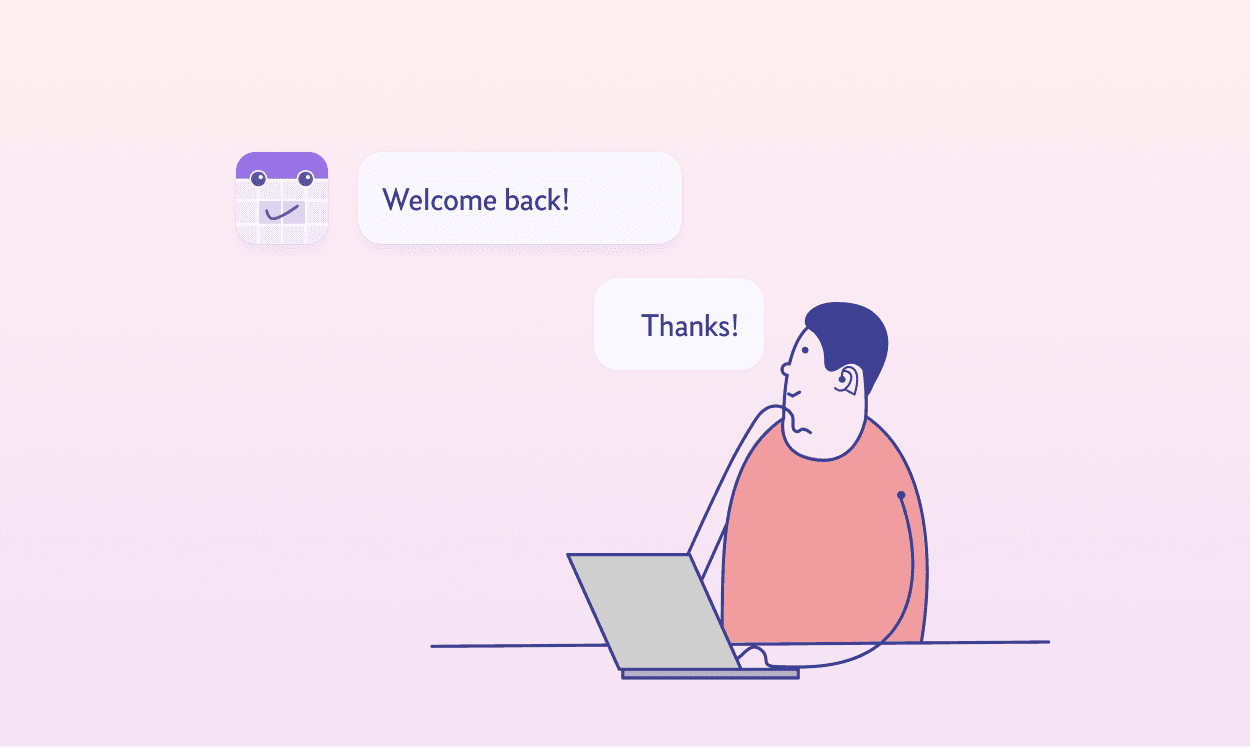Why we built Pause
Sep 9, 2021

Here's a little anecdote for you.
When you have less than 10 people in your company, it's easy to know who's in, who's out and who's working on what. Grow beyond 10 members, though, and you'll find that previously obvious information is now a mass of confusion, delays and missed trains. At the very least, it isn't scalable. At worst, it breaks both your projects and your teams. Fun.
After we graduated from 'founding team only' to 'can't count all my colleagues on one hand', we figured our first-ever time-off policy was the next on our to-do list. Initially, we adopted an unlimited PTO setup á la Silicon Valley. But the enthusiasm waned, our colleagues began being too careful with their leaves, and burnout was upon us. And so that led to a burning question: Were unlimited leaves policies for everyone?
To fight burnout, the the elephant in the room, the right way, something had to go. And it darn well wasn't going to be our mental wellbeing. We went hunting, and stumbled upon tools in all shapes and sizes that fell broadly into two buckets: full-blown HR suites that did more than manage time off, and lightweight trackers.
We began with a lightweight tracker because it was easy to use and catered to our very basic needs. We managed to keep the flexibility we wanted to make part of our culture, while also encouraging people to take the time off they deserve. But as we grew to fill our boots, several cracks began to show.
Identifying what worked and what didn't
We combined our expertise in building digital products and our experience of one such time-off tracking app as a client. Through this, we found several gaps between what we wanted and what we had:
Clunky workflows
Despite being nifty enough, our lightweight leave tracker had gone through its fair share of feature bloat. This resulted in confusing processes and counterintuitive pages that were neither delightful nor easy to use.
Transactional approaches
As an organisation, we look at time off as an integral part of how we work, and not as an afterthought. So obviously, the transactional and predatory nature of existing tracking tools really chafed against our nature. We wanted to look at time off like a big picture — to go beyond transactional time-off tracking and keep the entire team informed and productive.
Basics, but only the basics
We love empathetic features like nudging teammates to take time off if they haven't in a while, or planning around colleagues' breaks so they're refreshed and we're forging ahead. The basic features on our leave tracker did their job well — which is to say, they tracked. But they lacked the nuances of time-off information that we wanted.
Building the ideal leave informing app
As it turns out, there's a wonderful shift happening in workplaces today: they're becoming less robotic and more empathetic in nature. More and more companies of all sizes are loosening up their rigid leave policies to be more human-centric.
But the tools in our largely systems-first world hadn't come up to speed yet. With the insights gathered from user interviews and our beloved beta users, we realised the perception of 'time off' — and how it's treated by software providers today — needed a big ol' overhaul. And so, having built some of SE Asia's most successful consumer products, we decided to take matters into our own hand.
Long story long, that's how Pause came into being. It's a handy time-off management tool that helps teams plan and take time off as needed, and view overall schedules in one place to keep projects running smoothly.
With Pause, you'll get the table stakes in terms of features, but you'll also get empathy and transparency. That's because Pause is guided by a heartfelt philosophy, and not just a robotic assessment of lucrative markets. And for that, it's as humane as can be.
The philosophy
We believe that that time off is a necessity, not just a nice-to-have — and this governs all our decisions while building. We want Pause to be the first choice for active time-off informing, rather than passive tracking and monitoring. Therefore, the principles of trust, empathy and intentional growth guide our groundwork.
The intent
Through Pause, we want to enable small businesses or teams to better manage their organisational planning and set up policies that promote a healthy culture. We want to avoid falling headlong into a systems-first hole where teams are left on their own to piece things together. Instead, we're constantly making sure that Pause is built for the user — whether's that's an HR person checking the stats, a team member planning their week ahead, or a founder rallying the troops for a big project.
The final product
With Pause, every feature, every flow, every pixel you will see on your screen has been carefully considered and thoughtfully placed. We've plugged in a whole host of features that simplify the entire process of taking time off: from application and confirmation or rejection, to team-wide information. This includes Google Calendar and Slack integrations, one-click leave approvals and rejections, and a calendar spread showing the leave schedules of the overall organisation and smaller teams.
Pause today to recharge for tomorrow
Software continues to grow and evolve with its users, and so will Pause. We're constantly improving, adding and removing elements with the help of our beta users. We want Pause to be the frontrunner of new-age products that are non-intrusive and human-first.
Pause is buoyed by strong intentions and forethought, and isn't 'just another tool', even if we do say so ourselves.
This lightweight app comes waving the flag of a larger mission: to create a happier alternative world that, instead of rewarding an "always on" culture, encourages team members to put themselves first and see the magic that happens!
